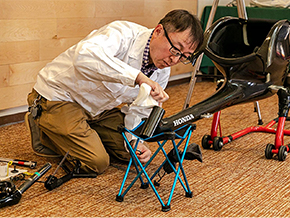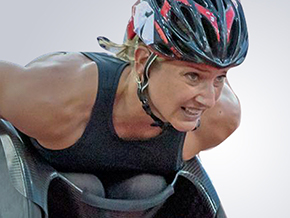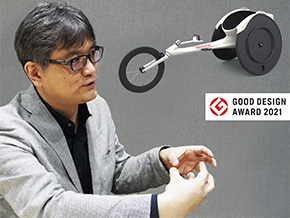- Top
- Racing Wheelchairs
- History
- Athletes
- Oita Wheelchair Marathon
- Designer Interview
Honda uses its technological expertise to provide support
Developing and providing racing wheelchairs
Honda has continued to develop and provide racing wheelchairs for its sponsored athletes since the 1990s. When the company first started providing support for wheelchair athletes, its support took the form of cooperation with the Racing Wheelchair Research Group, a self-development group established by associates at the Honda Sun special subsidiary. In 2000, development of racing wheelchairs was entrusted to Honda R&D, and Honda succeeded in developing the world’s first full-carbon body racing wheelchair.
Honda, Honda Sun, and Yachiyo Industry subsequently joined forces and began developing a high-quality racing wheelchair. In 2014, Honda launched the KIWAMI racing wheelchair, which made use of cutting-edge carbon technologies. Then, in 2017, the three companies initiated a project to develop a new model, known as the KAKERU FLAGSHIP (“KAKERU FLG”); it was finally completed in 2019.

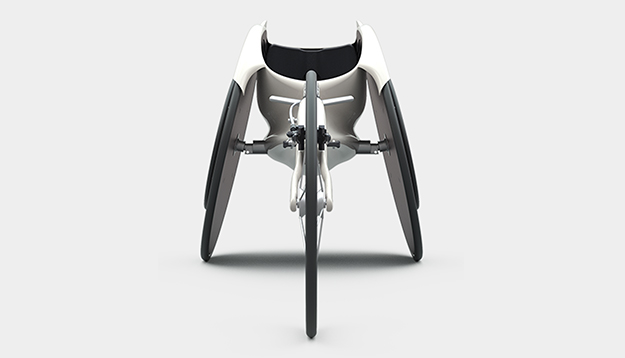
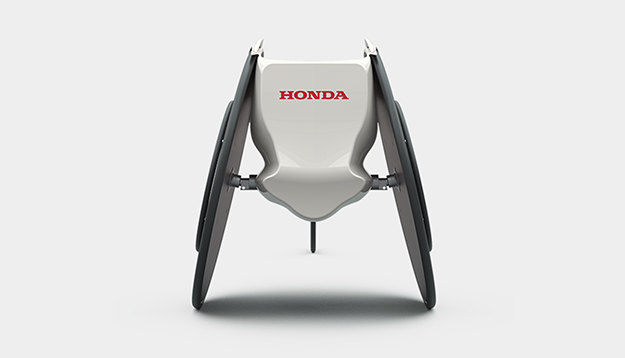

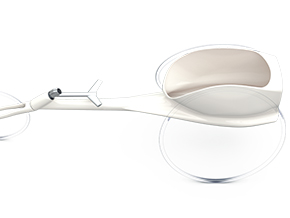
Wing frame
The wing-shaped main frame is the product of carbon technologies developed for F1 racing and HondaJet. It combines superior physical properties with sharp, motivating design.
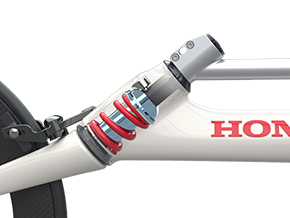
Built-in steering damper
This original new steering mechanism encloses the damper and other steering parts inside the frame, thereby protecting critical driving components while enabling a clean and elegant front fork design.
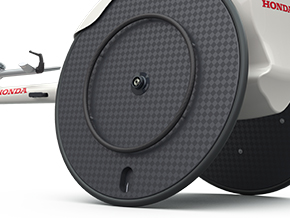
Ultralight high-rigidity wheels
These ultralight yet highly rigid carbon wheels are newly structured so that no energy is wasted in transmitting the athlete’s arm power to the pavement—enabling the fastest racing speeds possible.
Technical support
Honda provides three forms of trackside technical support for its wheelchair athletes: maintenance, stroke-power visualization, and nondestructive testing. This technical support enables the company to provide its athletes with safe racing wheelchairs in the best condition, and enables the athletes to demonstrate their full potential.

For “maintenance,” Honda conducts interviews with each of its athletes to resolve any issues that may have arisen and to replace worn-out parts.

Honda attaches special wheels to its athletes’ racing wheelchairs for “stroke-power visualization.” When the athletes push the wheels, the wheels allow the power exerted by the athletes to be instantly analyzed and quantified. Stroke-power visualization is a useful way of evaluating effective training techniques, generation of power, and improvements in form.
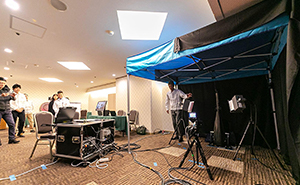
“Nondestructive testing” refers to tests that use thermography, lasers, and other tools to check whether the frames or wheels have incurred damage invisible to the human eye. The tests have numerous benefits: they ensure athletes can compete in safety and with peace of mind; they reveal the extent of damage incurred by racing wheelchairs and show how the wheelchairs are being used; and they provide feedback for racing wheelchair research and development.
